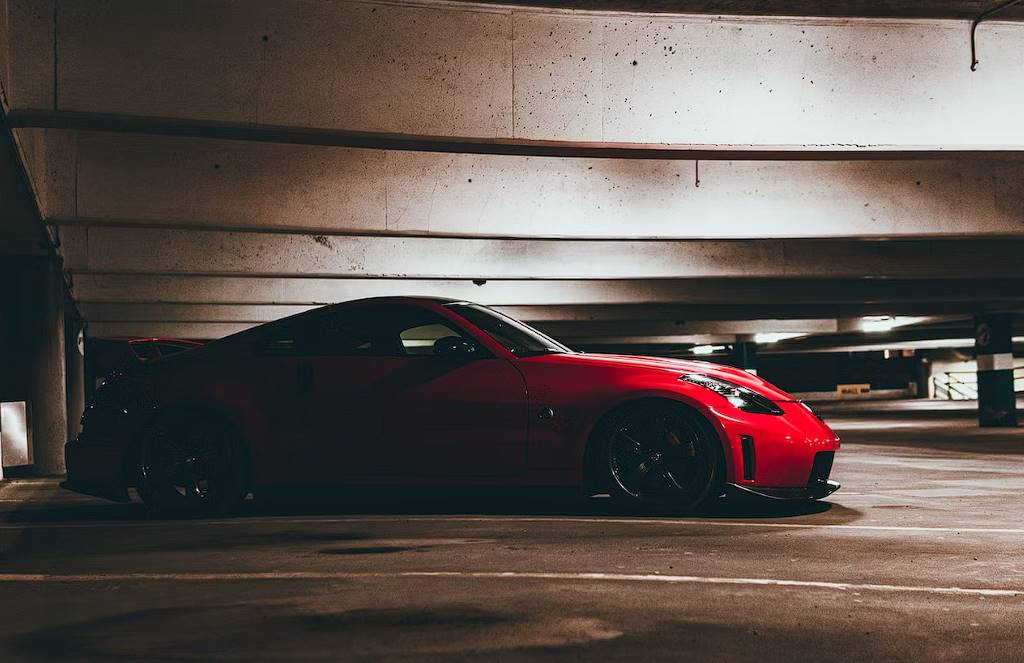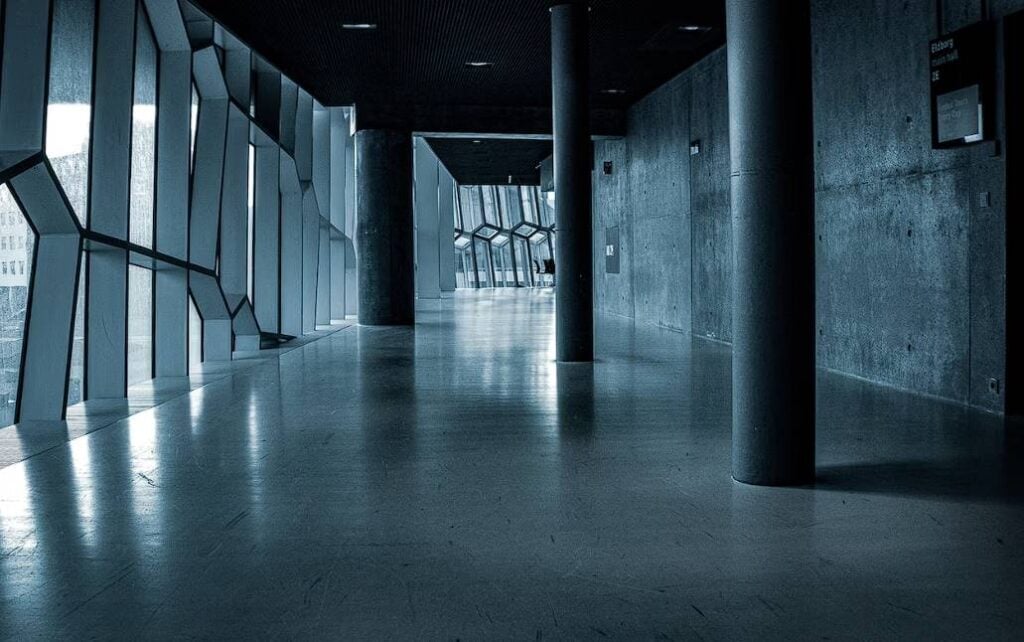Do you ever find that no matter how frequently you clean your dusty garage floor, it always remains dusty? Even after thoroughly washing it, does running your fingers over the dry concrete leave a white, dusty residue on your fingertips? If you can relate to this, you might be dealing with a problem called concrete dusting.
Household dust originates from various sources, including pet dander, clothing fibres, dead skin cells, dirt, pollen, deceased insects, and particles from paint, wood, and construction materials used in homes. These are just a few examples of what contributes to dust creation.
For many individuals, the issue of dusting specifically affects concrete floors in their garages, which can be a source of frustration. However, the good news is that the dust on a garage floor can be minimised. In some cases, it can even be eliminated, depending on the severity of the problem and the solutions implemented.
Why Is My Garage Floor So Dusty?
Dusty concrete is a prevalent issue in garage floors, primarily due to the material they are made of. The following are numerous factors contributing to the troublesome nature of dusty concrete:
- The concrete needed to be mixed better, and it had too much clay or silt.
- Inadequate curing and sealing at the surface. If the concrete isn't properly cured and sealed, water, oil, or grease will slowly break it down, making dust.
- Too much bleeding water during the finishing process. The extra water will rise to the surface, bringing finer particles. This makes the concrete surface weaker and softer.
These factors, occurring during concrete installation, contribute to its continuous disintegration. In addition, everyday activities like foot traffic and the movement of vehicles over the surface further exacerbate this breakdown, resulting in dust production. This is why achieving a completely clean garage floor that is free of dust seems impossible.
One of the primary causes of this issue is an excessive amount of bleed water on the surface. When there is an excess of water in the concrete mix, it rises to the surface during the finishing process (troweling). This surplus water carries fine particles and cement, forming a weak layer of concrete at the topmost surface of the slab.
Referred to as concrete laitance, this porous layer of softer concrete gradually deteriorates, creating a powdery white surface. Sometimes, the surface may be so soft that a sharp screwdriver or nail can easily damage it.
Furthermore, a similar condition can arise when water is added to the surface during finishing. Less experienced or DIY concrete finishers often resort to this method as a final attempt to achieve a smooth, troweled surface.
Regrettably, sweeping or even pressure washing the concrete never results in a completely clean surface. This is because the surface is constantly disintegrating.
If left unaddressed, this fine concrete dust can be extremely bothersome as it settles on cars, workbenches, laundry machines, and any other items stored in the garage. It can also be tracked into the house on the soles of shoes.
Garage Dust Control Is Important. Here's Why.
Excessive exposure to dust poses health risks, particularly regarding respiratory issues. Inhaling high dust levels can lead to respiratory problems, and many dust particles contain elevated levels of chemicals, which can result in more severe health complications.
If you frequently utilise your garage for activities such as a home gym, workshop, or any other hobby, reducing dust becomes even more crucial. This is necessary to maintain a healthier environment and minimise potential health hazards.
Furthermore, it's important to acknowledge that excessive dust in any room is visually unappealing. Even a meticulously organised space can appear messy and unkempt when covered in an unsightly layer of grey dust.
How to Stop Concrete Dusting
Once concrete dusting has started, sweeping up the dust is insufficient, and further actions are necessary. It is crucial to understand that addressing concrete dusting is not a do-it-yourself (DIY) task. It is a significant problem that is best handled by professionals with expertise in this area.
Declutter
To reduce the dust in your garage, it is advantageous to maximise the available space. Let us explain in more detail.
Garages often become storage spaces for various items that we rarely use. These may include seasonal decorations, old tools, and camping equipment, which remain untouched for long periods and become prime surfaces for the dust to collect.
Consider this: the more items you have in your garage, the more surfaces there are for dust accumulation.
By decluttering your garage, you effectively decrease the number of surfaces that attract and accumulate dust. In addition, when you have fewer items, there are fewer places for dust to settle, reducing overall dust buildup.
Grind Down
Dust accumulation on the concrete surface can result in porosity and unevenness. To address this issue, an expert in the field would typically start by grinding down the uneven surface. This step is essential in ensuring the proper adhesion and security of the applied coating.
An uneven ground can hinder the sealing process of the coating, potentially leading to insecurities and durability problems with the coating itself. In addition, if the coating is not securely bonded, it becomes vulnerable to wearing away prematurely.
To mitigate these issues, the initial stage of applying any of our coatings involves mechanical preparation, which often includes grinding. This preparation step aims to create a smooth and properly prepared surface for optimal coating adhesion and longevity.
AC/HVAC and Filters
Having an AC or HVAC heating/cooling system in your garage can greatly reduce dust. The system's filter plays a crucial role in removing airborne particulates, effectively reducing excess dust from the concrete floor. However, it is important to note that a clogged filter will hinder its efficiency, allowing dust to accumulate and potentially leading to increased energy consumption.
To maintain optimal performance, cleaning and changing your AC/HVAC filters regularly is essential. By doing so, you will notice a significant difference in the reduction of dust in your garage and potential energy savings.
Cleaning the Concrete
The next crucial step is to thoroughly clean your concrete, as any loose dust, dirt, oil, or grease can hinder the proper adhesion of treatments to the surface. Follow these steps for a comprehensive cleaning process:
1. Begin by sweeping up any loose debris using a broom.
2. consider using a vacuum designed for a more thorough cleaning for wet and dry conditions. These vacuums can effectively collect fine dust particles that a broom may miss.
3. If your garage floor is heavily soiled or stained, it may be necessary to employ a pressure washer. Pressure washing can effectively remove stubborn dirt, oil, and grease stains that cannot be addressed by a broom or vacuum alone.
4. Allow your concrete to dry completely after cleaning. It is crucial to ensure the surface is not damp before applying any sealer, hardener, or coating. Inadequate drying can result in an uneven finish, poor adhesion, and potential dusting issues.
5. Depending on weather conditions and humidity levels, drying may take a few hours or even several days. Therefore, patience and sufficient time for the concrete to dry thoroughly are essential. However, this waiting period is worth it to achieve the desired results.
Properly preparing your concrete through thorough cleaning and adequate drying increases the likelihood of maintaining a clean and dust-free garage.
PVA GLUE
Polyvinyl acetate, or PVA, is a commonly used concrete sealer to safeguard your garage floor from disintegration. Once you have thoroughly cleaned the concrete surface, you can apply the PVA sealer using a paintbrush. After it dries, the sealer will leave a clean floor, not prone to dust accumulation. However, it is important to note that PVA sealer tends to crack relatively quickly, so caution should be exercised in its application.
Repair and Replace
If the concrete in your garage has suffered significant damage, it may be necessary to proceed with repairs.
Following the repair phase, the next step involves preparing the coatings for the floor. Finally, the application process will commence once the vertical surfaces and nearby stairs have been coated.
Sealing the Concrete
Now it'sit's time to proceed with the next important step: sealing the concrete. Again, utilising a high-quality sealant can make a significant difference by reducing moisture absorption and preventing troublesome dusting. Follow these guidelines to ensure effective sealing:
Let's start with discussing the types of sealers available. The three main types that deliver optimal results are silane, siloxane, and silicate-based sealers. Each type penetrates the concrete, creating a protective barrier against moisture and dust. Choosing the appropriate sealer based on your specific concrete type and condition is crucial. Seek assistance from your local home improvement store or conduct online research to find the best match.
Now, let's delve into the application process. You can employ several methods: spraying, rolling, or brushing. The key is to apply the sealer evenly across the entire concrete surface. Take time with this step, as exercising patience will yield a properly sealed floor.
Sealing your concrete garage floor offers numerous benefits. Firstly, it enhances durability and resistance to stains and chemicals, which is especially advantageous if you use your garage as a workshop. However, there are a few downsides to consider as well.
While a sealer improves moisture resistance, it can also reduce the breathability of the concrete. Consequently, any trapped moisture may lead to discolouration or peeling over time. However, these risks can be mitigated through proper preparation and meticulous application techniques.
Vacuum, Don't Sweep
After you have completed a thorough cleaning of your garage and implemented measures to reduce and control dust, it is important to maintain ongoing cleaning efforts. To effectively keep your garage clean, using a shop vacuum with a reliable internal filter is superior to simply sweeping dirt with a broom.
Most of the dust in a garage is made up of very small particles, some of which are almost microscopic. When using a broom, there is a higher chance of redistributing this dust rather than effectively removing it. In contrast, a shop vacuum with a well-maintained filter can capture and contain fine dust particles.
It is crucial to regularly clean or replace the filter in your shop vacuum to ensure that it continues to catch and contain fine dust efficiently. By doing so, you can effectively keep your garage clean and minimise the presence of dust particles.
Coating and Chipping
With all the necessary preparations and precautions, the next step is to apply the first basecoat. This polyurea basecoat serves as a durable adhesive that ensures everything remains protected and securely in place.
Following the application of the basecoat, the decorative chips are evenly distributed. These chips vary depending on the chosen system and serve multiple purposes. They add a decorative touch, enhance abrasion resistance, and provide texture for a slip-resistant surface.
Excess chips are removed once the chips are properly set, and the surface is carefully scraped to achieve a smooth and comfortable walking surface. This step enhances durability and ensures a pleasant experience when walking on the coated floor.
Subsequently, any remaining debris is vacuumed, ensuring a clean and debris-free surface. Finally, the final topcoat is applied and allowed to set, completing the coating process.
These coatings offer exceptional protection against floor dust. In addition, they act as a barrier that prevents concrete dust from being released. Moreover, these coatings provide additional benefits such as increased safety and aesthetic appeal, making them a highly desirable solution for a dust-free and visually pleasing garage floor.
Conclusion
Dusty concrete is a common issue in garage floors, primarily due to the material they are made of. It can be caused by various sources, such as pet dander, clothing fibres, dead skin cells, dirt, pollen, and particles from paint, wood, and construction materials. To reduce dust production, it is important to mix the concrete better, cure and seal the surface, and use bleed water during the finishing process. Additionally, foot traffic and the movement of vehicles over the surface further exacerbate this breakdown, resulting in dust production. Concrete dusting is a serious problem that can lead to health risks and visual unappealingness.
To reduce the dust in your garage, it is important to declutter and grind down the concrete surface. This will reduce the number of surfaces that attract and accumulate dust, as well as reduce the porosity and unevenness of the concrete surface. Professionals with expertise in this area are best suited for this task. The initial stage of applying a coating involves mechanical preparation, such as grinding down the uneven surface. AC/HVAC and filters are essential for reducing dust and energy consumption.
Cleaning the concrete is also important, as any loose dust, dirt, oil, or grease can hinder the proper adhesion of treatments. It is important to allow the concrete to dry completely after cleaning to ensure the surface is not damp before applying any sealer, hardener, or coating. Patience and sufficient time for the concrete to dry thoroughly are essential to achieve the desired results. The most important details in this text are the steps needed to maintain a clean and dust-free garage floor. The first step is to thoroughly clean the concrete surface and apply a polyvinyl acetate (PVA) sealer using a paintbrush.
The second step is to repair and replace damaged concrete, and the third step is to seal the concrete with a high-quality sealant. The application process involves spraying, rolling, or brushing the sealer evenly across the entire concrete surface. Sealing the concrete offers numerous benefits, such as improved durability and resistance to stains and chemicals, but it can also reduce the breathability of the concrete. Finally, it is important to maintain ongoing cleaning efforts to reduce and control dust. A shop vacuum with a reliable internal filter is the best way to effectively keep a garage clean.
It is important to regularly clean or replace the filter in the shop vacuum to ensure that it captures and contains fine dust particles efficiently. Coating and Chipping involves applying a basecoat of polyurea, decorative chips, scraping the surface, vacuuming any remaining debris, and applying the final topcoat. These coatings offer exceptional protection against floor dust, act as a barrier, provide increased safety and aesthetic appeal, and are a highly desirable solution for a dust-free and visually pleasing garage floor.
Content Summary
- Dusty garage floors can be frustrating to clean, as they seem to remain dusty even after thorough washing.
- Concrete dusting is a common problem that affects garage floors.
- Dust in garages originates from various sources such as pet dander, clothing fibers, dead skin cells, dirt, pollen, insects, and particles from paint, wood, and construction materials.
- The composition of the concrete used in garage floors can contribute to dusting issues.
- Factors like inadequate mixing, curing, and sealing of the concrete can lead to dust production.
- Excess bleeding water during the finishing process can weaken the concrete surface and make it softer, resulting in dusting.
- Concrete laitance is a porous layer that forms on the surface of the concrete, leading to a powdery white residue and potential damage.
- Adding water to the surface during finishing can worsen dusting issues.
- Sweeping or pressure washing the concrete does not eliminate dust because the surface is constantly disintegrating.
- Dust on the garage floor can settle on cars, workbenches, and other items, and can even be tracked into the house.
- Excessive exposure to dust can pose health risks, especially for respiratory issues.
- Reducing dust in garages is important for maintaining a healthier environment.
- Excessive dust accumulation in any room can make the space appear messy and unkempt.
- Professionals should be consulted to address concrete dusting issues effectively.
- Decluttering the garage reduces the number of surfaces for dust to accumulate.
- Grinding down uneven surfaces helps create a smoother and more secure base for coatings.
- AC or HVAC systems with clean filters can reduce dust in the garage.
- Thoroughly cleaning the concrete surface is crucial before applying treatments or coatings.
- Using a vacuum designed for wet and dry conditions can effectively remove fine dust particles.
- Pressure washing may be necessary for heavily soiled or stained garage floors.
- Allowing the concrete to dry completely before applying treatments is important for optimal results.
- Applying a polyvinyl acetate (PVA) sealer can help prevent dust accumulation on the garage floor.
- Repairing damaged concrete may be necessary before proceeding with coatings.
- Sealing the concrete with the appropriate sealer helps reduce moisture absorption and dusting.
- Different types of sealers, such as silane, siloxane, and silicate-based sealers, can be used based on the concrete type and condition.
- Applying the sealer evenly across the entire concrete surface is crucial for effective sealing.
- Sealing the concrete enhances durability, resistance to stains and chemicals, but reduces breathability.
- Using a shop vacuum with a reliable internal filter is better than sweeping for removing fine dust particles.
- Regularly cleaning or replacing the filter in the shop vacuum is important for effective dust containment.
- Coatings with a polyurea basecoat and decorative chips provide protection against dust, enhance durability, and improve the appearance of the garage floor.
Frequently Asked Questions
Efflorescence is a crystalline deposit of salts that can form when water is present in or on brick, concrete, stone, stucco or other building surfaces. It has a white or greyish tint and consists of salt deposits that remain on the surface after the water evaporates.
Dusting is the release of powders when the concrete moves or is touched. The dust occurs when the surface of the concrete is not strong enough and is brittle and porous. A porous surface is weak and, in turn, can lead to more dusting.
Unfortunately, HVAC systems and air purifiers in other parts of your home may not help much since most garages are largely cut off from the air circulating in the rest of your house. Luckily, with a garage air purifier, you can improve the air quality inside your garage with relative ease.
Acrylic sealers are film-forming and create a protective coating on top of the surface. This thin coating layer acts as a barrier on the concrete, sealing in and stopping the dusting. If the garage will encounter vehicle traffic, then our recommendation would be an MMA acrylic sealer.
Basic measures include airing out your garage to remove moisture by turning off any heating in the garage and opening the door a couple of inches. This will draw the moisture out of the space. You can also open any available access windows or doors to allow air circulation to reduce humidity levels quicker.







